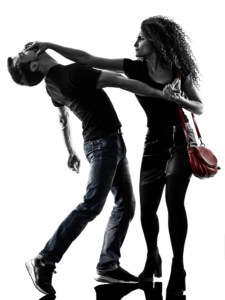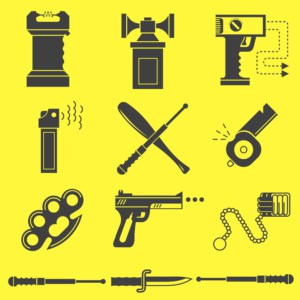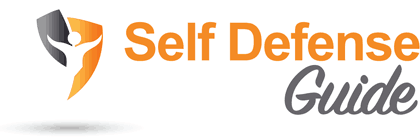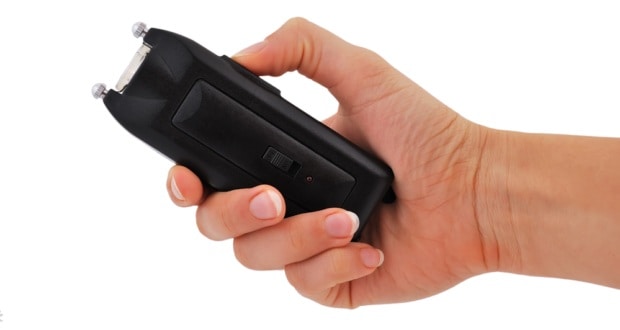
Many aspects of self-defense use common sense.
If you’re by yourself in a strange city, then you know not to go down some dark alley. Who knows what might be lurking in those shadows, right?
Now here’s the problem: shadows can hide an attacker at any time and virtually anywhere. Even within the relative safety of a home.
Learning methods of self-defense can help you make sure you can stay safe should something come out of those shadows. This quick guide to self-defense can help a complete beginner start to develop the tools they need to stay safe.
It can also serve as a reminder of the fundamentals that self-defense experts should be following every day.
Here is what you’re going to want to know.
Take the Basics of Self-Defense Seriously

You don’t need to have any basic hand-to-hand defensive skills to effectively protect yourself in today’s world. You don’t even need to own one of the best stun guns or Tasers to keep yourself safe.
All you need to do is make sure that you’re not making yourself a potential target when you are around other people. You can reduce your chances of becoming a mark by following these basic steps.
- Stay off your phone when walking in public. If you’re glued to your phone, then you will not see someone with nefarious intent coming your way. It’s much easier to miss an intersection, step into traffic, or put yourself into other unsafe situations because your attention has been distracted. Whenever possible, keep off your phone in public and this will help to keep you safer.
- Lock your doors.This should be the first thing you do whenever you enter your vehicle or your home. Don’t even put your keys away or your purse down before doing so. If an individual has been following you and you haven’t realized this fact, you may only have a few seconds to put a locked barrier between them and you. Get into the habit of locking your doors immediately.
- Have your keys or self-defense items at the ready. Always have your keys at the ready when approaching your home or vehicle. Digging for your keys at the door makes you a vulnerable target. If you have a self-defense item, such as a pepper spray or a blunt force object, keep it at the ready as well if you believe you might be in a position of vulnerability in the future.
If you do believe that someone is following you, then do not go home. Make your way to a public area where there are plenty of other people. A restaurant or a busy store are both good options. Then call the police from within that building and alert the manager that you believe you are being followed.
That will give you additional protection resource should the individual following you attempt to continue their pursuit.
The Basics of Self-Defense with Children

As much as we’d like to think the bad guys won’t target children, incidents like what occurred at Sandy Hook Elementary or problems like internet luring prove otherwise. Parents and guardians should be having conversations with their children about what to do if there is a suspicion of danger that is nearby frequently.
Good self-defense means never assuming about the intent of a bad guy. People with nefarious intent have no problem using children to accomplish their goals.
For this reason, it is important to always stay between children and the potential threat that has been identified. Even if you have a stroller or some other device being used with the child in it, do not assume that this will stop the bad guy.
Then make sure the children are prepared to respond immediately. If a child is old enough to walk, they are old enough to practice moving to a safer position. Create a password that only you and your children know.
When our children were younger, our password was “Power Ranger.”
Then have the children practice what they should do when you say this password. To get into a defensive position, a child should go behind a parent quickly, grab the back pockets of the pants or inside the waistband, and then straighten their arms.
This gives your child a defensive shield and will give you the opportunity to defend yourself should an attack occur.
Although the basics of self-defense with children can be scary, even when you turn the process into a game, it is a necessary action to take in our current world.
Actions You Should Not Take to Protect Yourself

In some self-defense classes, some are taught that the best way to defend oneself is to drop to the floor and kick an attacker as much as possible. There is no other way to put this: that is a very bad idea. There are three reasons why you should never attempt to drop to the ground as a form of self-defense.
- It limits your movements. Once you drop to the ground, you have closed off any means of potential escape. You are now forced to defend yourself against the attacker by any means necessary.
- It reduces your chances of using a self-defense weapon. When you’re on the ground, you have limited access to your pockets, purse, or holster. It is better to grab your self-defense weapon and use it immediately then to drop to the ground and then try to get it into your hands.
- Kicking creates space, but creates vulnerabilities. You might get a few good kicks in when you’re on the ground, but a smart attacker will figure out a way to come over the top of your defense maneuver. Once in a mounted position, your primary method of self-defense is all but disabled and you’ll be at the mercy of the attacker. This vulnerability brings more risk than reward.
Relying on only one self-defense method to defend yourself is another action you should not take. You can be yelling at the top of your lungs all you want, but if no one responds, the attacker is still going to proceed with their plans. You must have a plan that includes multiple tiers of defense to stay as safe as possible.
If you do carry self-defense weapons, then it is important for you to keep them within reach whenever you are in public. Should something happen and the tool or weapon not be in your hand, then you might as well not have even purchased it.
What If an Attacker Has a Weapon?
There are a few stories that come out every year where an attacker tried to use a weapon, but someone defended themselves in that situation and forced the attacker to flee. That success might make people smile, but it also makes self-defense experts cringe.
The risks of pursuing an attack against someone with a weapon are far higher than if you were to simply comply with the demand.
If someone has a weapon and demands your purse, your wallet, or even your phone, then give it to them. Make sure that you throw the item a couple of feet to the left or right of the attacker so that you can shift their focus. This will give you an opportunity to escape and call the police.
Money, phones, and any other item like that can be replaced. It may be costly if the item demanded is expensive, but it is better to live another day than fight for your credit cards or your iPhone.
If an attacker has a weapon and is attempting to remove you from a public area, however, compliance is the last thing you should be considered. Being moved into a vehicle, a dark alley, or even a closet while an attacker has a weapon puts your life at an even greater risk. You’re better off fighting in that moment to increase your chances of survival.
Even if you live in an area that rarely experiences crime, you can never be too safe. It is better to be over-prepared and never need to defend yourself than to be under-prepared and find yourself fighting for your life.
Self-Defense Tools Besides a Gun that are Useful to Carry

The problem with carrying a firearm is that you have numerous laws and regulations that must be followed. Very few states allow you to purchase a gun and then carry it in public. Carrying a concealed weapon in public without the proper permits or documentation could even cause you to run afoul of law enforcement.
With that being said, a properly trained individual with a firearm is one of the best methods of self-defense that is available today.
Some people are not comfortable carrying a firearm with them. Others do not wish to carry a firearm because of the risks involved should an attacker be able to take it off their person.
That is why there are several self-defense tools that are available today that are not a gun, but can still provide you with an effective way to defend yourself should the need arise. Here are some of the best options that are available right now.
Flashlights: A flashlight is a surprisingly useful self-defense tool as it gives you multiple options for defense. Heavy flashlights can be used as a blunt force weapon to stop an attack. A flashlight that offers at least 500 genuine lumens can temporarily blind an attacker. Tactical flashlights offer a strobe light function, alarms, and strike bezels that can all be used for self-defense as well.
Keychains: The modern self-defense keychain can provide you with numerous options. Some come with a personal panic alarm that can sound as loud as 130 decibels. Others come with hardened plastic or metal spikes that can help you defend against a close-proximity attack. In a pinch, you can even use your old-fashioned keys as a potential self-defense option. Just don’t jam your keys between your fingers as you make a fist. An impact will jam the keys into your palm and potentially harm you more than you’ve harmed the attacker.
Pepper Sprays: Since the 1970s, pepper sprays have been a popular self-defense tool. It is easy to use, can be sprayed over several feet from certain containers, and can affect several attackers at once. Although it causes pain and irritation, it may not always stop an attacker from pursuing their goal. Carrying pepper spray means having another option at escape. Look for a pepper spray that contains a UV dye to help law enforcement track down an assailant after you get away.
Stun Guns and Tasers: This is a popular self-defense tool because it requires very little training to be effective. For the most part, stun guns and Tasers are non-lethal as well, but give you the capability of completely immobilizing an attacker. Although skin contact is required for this option, it is a very affordable way to improve your chances of making an escape.
Tactical Knives: When an attacker is close to you, a tactical knife is often more effective than a firearm. You’ll need to check local knife laws on where and when you can carry, but the regulations are much less restrictive than other self-defense tools. Even a simple pocket knife can be used as a self-defense tool when necessary.
Tactical Pens: Although this self-defense tool provides less injury to an attacker, it is also one of the easiest items to carry with you every day. Many pens are designed to clip onto a pocket so they are always within reach should you need to use it. It will not penetrate the skin of an attacker like a knife, but it can do a lot of damage when thrust into a sensitive area, like the neck, throat, or groin. As an added benefit, they also write.
Important Points to Remember When Considering Self-Defense
- Several feet of space can be quickly closed by an attacker in seconds. Engaging a self-defense tool while an attacker is rushing will likely create personal collateral damage.
- Some people have a natural resistance to pepper spray. Some attackers may purposely expose themselves to high levels of capsaicin to prevent being incapacitated during an attack.
- The legality of a self-defense tool depends on your community. Specific rules may apply that allow you or do not allow you to own certain items. Just because a seller is willing to ship something to you does not mean you can legally own it.
- Any weapon can be turned against you. Make sure that you practice drawing and engaging with your weapon to lessen this risk.
- No self-defense tool is an every-type-of-situation weapon. Different scenarios require different tools for maximum protection. Consider carrying multiple tools with you to be fully prepared.
- If you use a stun gun or Taser, be aware that thick clothing may reduce or eliminate the intended effect. Using a Taser requires you to hit your target as well and hitting a moving target can be rather difficult.
- Always target vulnerable areas first. In the rush of adrenaline, you may feel the need to continue an attack instead of finding an escape. Maintain a three-step plan of defense (groin, nose, throat) and then disengage.
Fighting for Your Life Never Goes Out of Style
“Everyone has a plan until they get punched in the mouth.” – Mike Tyson
The days of fighting with bullies out on the playgrounds of our schools have come and gone. What has not disappeared is the need to defend oneself should an attacker decide that you are their next target.
The modern self-defense tool is an excellent way to make it easier for you to get away.
It is important to remember that the goal of self-defense isn’t to win the fight that has come to you. The goal of using a self-defense tool is to survive another day and escape without injury.
That is why your best defense is to be proactively aware of your circumstances in every situation. Make sure that you are always alert in public spaces. Keep your doors locked always, even if you live in a small town that never sees any crime. Avoid places that look to be dangerous.
Avoid people who appear to be dangerous as well.
Making a self-defense plan is good, but it must also be practiced to be effective. Consider taking self-defense classes in your community so you know how your body may respond if an attacker can get the first hit in on you. Look for self-defense tools that complement your lifestyle so you can stay safer in any situation.
Practice using your preferred self-defense tools so that you’re comfortable with them. If you’re called upon to use it to protect yourself, you must know what it can do.
Self-defense is a skill that hopefully you won’t need to use. Our world is changing, however, and violence toward innocents is a method of political gain that seems to be increasing. When you are prepared to defend yourself, you’ll be increasing the chances of survival and that’s what self-defense is all about.







